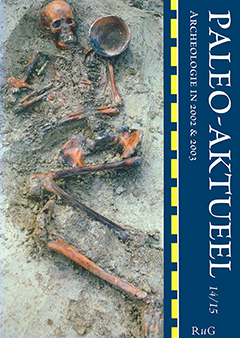De laatmesolithische vindplaats Jardinga: de opgravingen in 2002 en 2003
Samenvatting
During the summers of 2002 and 2003 additional research was carried out at the Late Mesolithic site of Jardinga in the province of Friesland. After the results of the 1981 excavation were analysed (Prummel et al., 1999; 2002) several questions remained unresolved, for example: 1) are the finds in an undisturbed situation, 2) what did theLate Mesolithic environment look like, 3) how large is the site, 4) is our interpretation as a kill site of aurochs and red deer correct? In order to answer these questions, an area of approximately 280 square metres was excavated and 284 corings were done. As in 1981, a number of aurochs (Bos primigenius) and red deer (Cervus elaphus) bones were discovered, some of them with cut marks. Several bones probably belong to the same animals that were uncovered in 1981. Beaver (Castor fiber) was hunted as well, and perhaps also the European pond turtle (Emys orbicularis).A number of flint artefacts were found in association with the bones, mostly chips and blades or blade fragments. They included no formal tools. Most of the bones and flint artefacts lay on the sand of the prehistoric riverbank and in the peat-filled channel itself. In and near the channel wooden stakes were found, which were also dated to the Late Mesolithic. It is suggested that they were part of a fish weir. So far Late Mesolithic remains have turned up over an area of approximately 75 square metres, covering both the river bank and the channel. Since the site is located at one of the narrowest parts of the Tjonger valley, it is hardly surprising that later periods are represented by finds as well. These are a wooden post from the Early Neolithic Swifterbant culture, a piece of barbed-wire pottery from the Early Bronze Age and two wooden stakes dating to the Middle BronzeAge.

